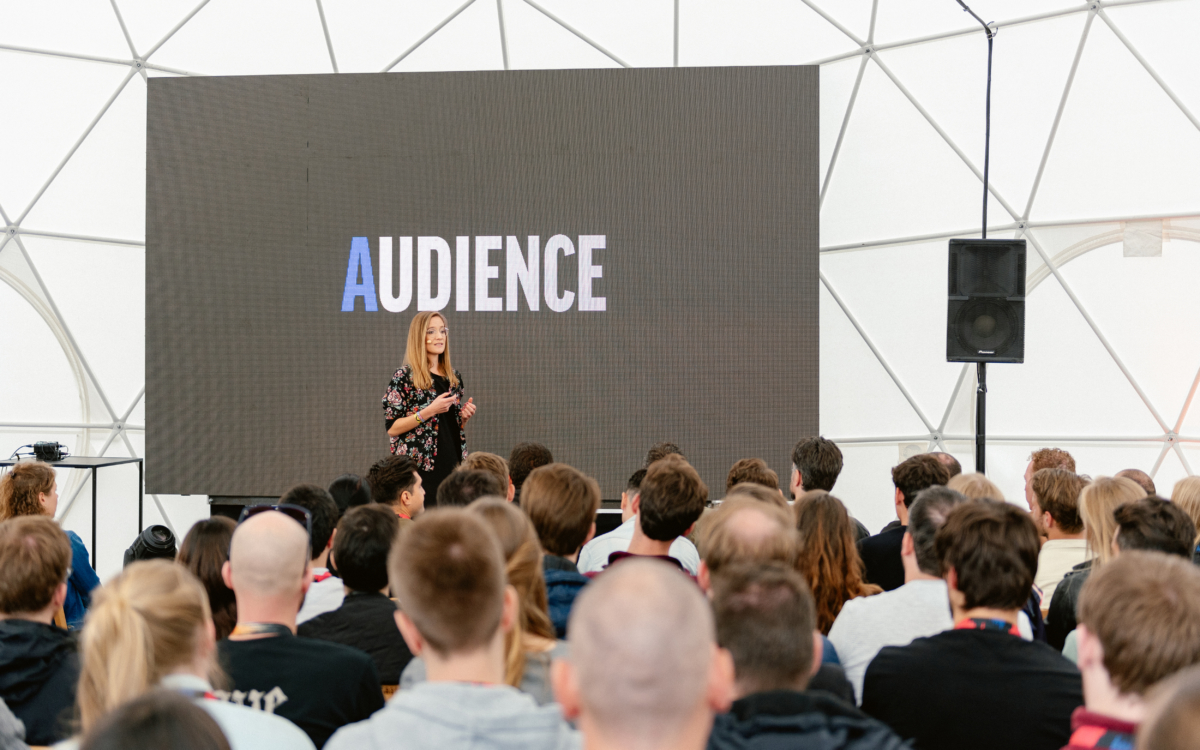The rise of eSports and how to grasp the opportunities


Paid Social Director
eSports, competitive video gaming watched by spectators, is big. It’s not only a sport, but it’s also the most popular – and profitable – form of entertainment today. An optimistic estimate places global revenues for eSports at 3.2 billion dollars by 2022. This means eSports could surpass the UEFA Champions League in terms of annual gross revenue. So, there is clearly an opportunity here, but many companies are not taking it. Why? Because many of us don’t take gaming seriously.
There’s a widespread myth that eSports is only popular among teens living in their parents’ basements and that these people are introverted and isolated. But this couldn’t be farther from the truth. The eSports demographic ranges from 18 to 34 years old and encompasses 30% women and 70% men. These people are passionate, social and highly-engaged across various platforms. These people also have jobs and are eager to spend money on their passion. As shown by the 31 million dollar prizepool, one of the biggest eSport events of the year, where 95% of it has been crowdfunded by individual gamers through their in-game purchases.
Thus, these fans are not afraid to take action and are more likely to notice, purchase, buy, and try brands that show support for their preferred league or player. So we need to start taking this target group seriously. Because eSports could allow brands to reach “the unreachables”: valuable, digital, high-income, passionate young people who are less accessible through traditional sponsorships and media buys.
So, how can you jump on this bandwagon and reach this audience? Companies could apply a Triple-A framework. In gaming, a Triple-A classification stands for ‘best in class’ games. Much like blockbuster movies, it costs a fortune to make a AAA game – just as it costs a fortune to make a new Marvel movie – but the anticipated returns make it worthwhile. Thus, by following a Triple-A framework, which stands for Audience, Attention and Authenticity, you can connect with your desired target group.
Audience
The eSports market is quite complex. There is a variety of game titles, platforms and fan interests. The biggest challenge for brands is to really understand these differences. So, first of all, it is crucial to understand your audience. For example, over 200 million viewers watched the League of Legend Championship final last year.
That is more viewers than the Super Bowl. But when you exclude Chinese viewers, this number decreases to just under two million. However, if you successfully reach 10% of that two million that’s still 200k motivated buyers. So it’s important to closely identify the cross-sections of your brand and your specific eSports audience.
Attention
Once you have identified your audience, the goal is to gain and retain their attention. Gamers care about brands that pay attention to them. This is an audience that really wants to connect – and play. So think of ways that help build the infrastructure of eSports and add value to the community rather than just trying to monetise the fan-base directly. For example, the telecommunication company UPC launched eSports.ch which, today, is the biggest news platform on eSports in Switzerland. UPC also co-created its first broadband product for gamers with the Swiss eSports community and established partnerships with major brands that will lead to joint product bundles this fall.
There is also Anzu, a startup that created a completely new advertising ecosystem where in-game ads can be booked in real-time. Ads are then integrated into the games as part of the gaming environment without interrupting the user experience. Long story short: standard media buys don’t work in this scenario. Your advertising content has to be very targeted and engaging.
Authenticity
Last but not least, just as in traditional sports marketing, your brand should be highly relevant and authentic. Brands who falter on authenticity will get hurt immediately, as eSports fans are used to spreading their opinions digitally. So how can a company or brand stay authentic? Don’t simply go about and advertise on all platforms.
Know your consumer, choose one clear message, make sure it fits your brand story and your audience, and broadcast it on the right channels. If you speak the same language as your target group and continuously do so this will build branding consistency and maintain consumer trust.
Grab the bull by its horns
There is tremendous money to be made in all facets of this industry, and more money to be made every year. The growth of eSports is undeniable. Now is the time for brands to figure out their eSports strategy. You still have a chance to get in early and maximise your opportunities. The time is now when it is still cheaper to sponsor a professional eSports team than a classic sports team.
The key is to find the right audience, get their attention in a clever way – show that you know them – and add something to their gaming experience, but do so in an authentic fashion. This world is not invisible anymore, enter it before everyone else does – and start the game.



